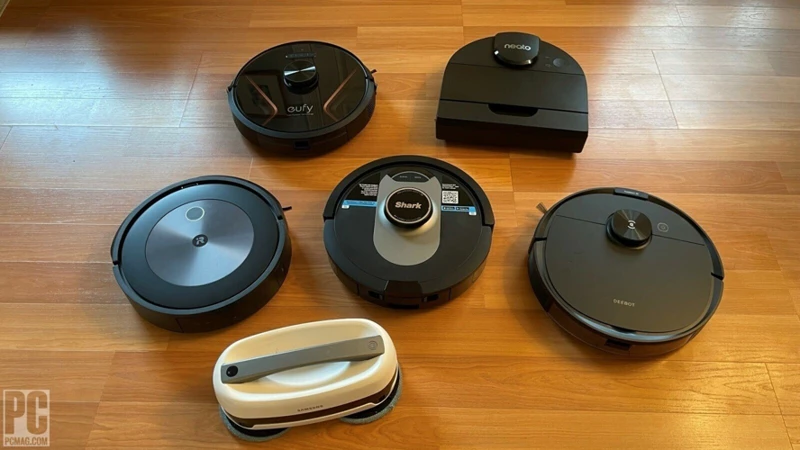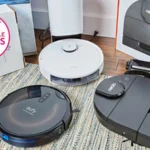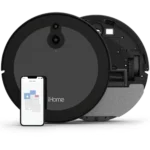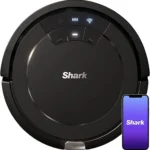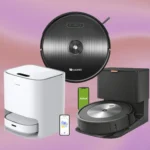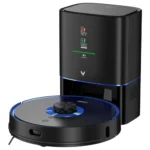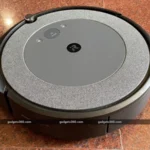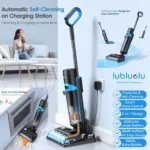Have you ever wondered how smart vacuum cleaners automatically adjust their height to clean different surfaces? It’s a perplexing feature that makes cleaning floors a lot easier. Imagine having to manually adjust a vacuum cleaner’s height every time you switch to a different surface? That would be time-consuming and tedious. Fortunately, with the advancement in technology, automatic height adjustment has become an essential feature on smart vacuum cleaners. In this article, we’ll explore how this feature works, the sensors and electronic circuit board that make it possible, and the different types of surfaces it works best on. We’ll also look at the advantages and challenges of using automatic height adjustment on smart vacuum cleaners. So sit back, relax, and learn more about this innovative feature that has revolutionized the way we clean our homes.
What is automatic height adjustment?
Automatic height adjustment is a feature that is now found in many smart vacuum cleaners. This feature allows the vacuum to adjust its height automatically based on the surface it is cleaning. It can detect variations in height or surface type and adjust the cleaning head accordingly. This feature is a remarkable innovation that helps to ensure efficient cleaning of different surfaces, such as carpets, hardwood floors, and tiled surfaces.
The automatic height adjustment feature is crucial for smart vacuum cleaners as it allows the vacuum to clean efficiently without requiring any manual adjustments. It saves users time and energy and also helps to prevent damage to surfaces and vacuum cleaners. When the vacuum cleaner adjusts its height automatically, it can seamlessly move from one surface to another without the risk of damaging either the vacuum or the surface.
One of the significant advantages of automatic height adjustment is that it can increase the life span of your vacuum cleaner. Without the need for constant manual adjustments, your smart vacuum with auto height can work without experiencing unnecessary wear and tear. This way, the vacuum cleaner can clean more effectively and last longer.
Nowadays, many manufacturers offer smart vacuums with automatic height adjustment, providing consumers with a wide selection to choose from. For instance, we listed the top five smart vacuums with auto height, describing their characteristics and features, which can be helpful for those who intend to buy a smart vacuum cleaner with automatic height adjustment.
Despite the numerous advantages and advancements in this technology, some challenges remain. For instance, some users have reported malfunctions in the automatic height adjustment feature, leading to decreased efficiency. However, these challenges can be resolved with basic troubleshooting techniques described in our article.
The automatic height adjustment feature on smart vacuum cleaners is a significant and innovative advancement in the cleaning industry. It offers numerous benefits to users, including efficient cleaning, energy and time savings, and preventing damage to surfaces and the vacuum cleaner itself. We highly recommend buying a smart vacuum with automatic height adjustment to benefit from its features and enhance your cleaning experience.
Why is it important on smart vacuum cleaners?
One of the significant features that set smart vacuum cleaners apart from traditional vacuum cleaners is the automatic height adjustment. It is a crucial feature that ensures the smart vacuum cleaner adjusts to different surfaces’ heights to achieve efficient cleaning results while preventing damages to both the cleaner and the surfaces.
The importance of automatic height adjustment on smart vacuum cleaners cannot be overstated. Without this feature, the vacuum cleaner would only work efficiently on a particular type of surface, limiting its functionality. With automatic height adjustment, the smart vacuum cleaner can comfortably transition from one surface to another, such as hardwood floors to low-pile carpets, without losing suction power or damaging the surface.
This feature enables the smart vacuum cleaner to detect the surface’s height and adjust the distance between the brushes and the floor. This makes it easier to clean carpets, which can accumulate dirt and debris, especially in high traffic areas. The smart vacuum cleaner can adjust to the height and agitate the carpet to loosen the dirt, then suck it up. When it moves to a hardwood floor or tiled surface, the smart vacuum cleaner can reduce the brush’s height, preventing scratches on the surface while cleaning effectively.
Automatic height adjustment also benefits users who live in homes with different types of surfaces. You don’t have to worry about switching vacuum cleaners every time you move from one surface to another, as the smart vacuum cleaner adjusts accordingly.
To summarize, smart vacuum cleaners with automatic height adjustment are essential tools for efficient and effective cleaning on different surfaces, saving time and energy while preventing damage. If you’re in the market for a smart vacuum cleaner, be sure to check out some top-rated options with automatic height adjustment, like the ones listed in our top 5 smart vacuums with auto height article.
How Automatic Height Adjustment Works
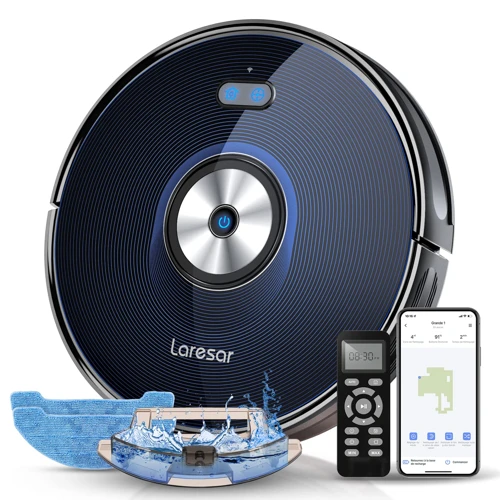
Automatic height adjustment is one of the key features that distinguishes smart vacuum cleaners from their traditional counterparts. This technology allows the vacuum cleaner to adjust its height according to the surface it’s cleaning, ensuring optimal cleaning performance on different surfaces. In this section, we will take a closer look at the components that make automatic height adjustment possible and how they work together seamlessly to provide an efficient cleaning experience.
The Sensors and Their Role
The first and most important component of automatic height adjustment is the sensors. These sensors are responsible for detecting the height of the surface being cleaned and sending signals to the motorized brushroll to adjust its height accordingly. The most common types of sensors used in smart vacuum cleaners include infrared, acoustic, and optical sensors. Each type of sensor works slightly differently but their ultimate goal is the same – to ensure that the vacuum cleaner is always operating at the optimal height for the surface type.
The Motorized Brushroll and Its Function
The second component of automatic height adjustment is the motorized brushroll. Once the sensors detect the height of the surface, they send signals to the motorized brushroll to adjust its height accordingly. The motorized brushroll is designed to work in tandem with the sensors, which ensures that the vacuum cleaner maintains constant contact with the surface it is cleaning. This results in a more efficient cleaning experience as the vacuum is able to pick up more dirt and debris.
The Electronic Circuit Board and Its Process
The final component of automatic height adjustment is the electronic circuit board. This board acts as the brain of the vacuum cleaner, receiving signals from the sensors and interpreting the data to control the motorized brushroll. The electronic circuit board is programmed with algorithms that take into account different surface types and adjust the height of the motorized brushroll accordingly. This ensures that the vacuum cleaner is always performing at its best, providing optimal cleaning performance on any surface.
The three components of automatic height adjustment work in conjunction with each other to provide a seamless and efficient cleaning experience. By constantly adjusting its height based on the surface being cleaned, the smart vacuum cleaner is able to clean more efficiently and effectively than traditional vacuum cleaners. To learn more about the advantages of smart vacuums with automatic height adjustment or to buy a smart vacuum with this feature, click here.
The Sensors and Their Role
Sensors are an essential part of the automatic height adjustment system in smart vacuum cleaners. They play a crucial role in determining the surface type the vacuum cleaner is cleaning and the amount of pressure it needs to apply for optimal cleaning. These sensors are sensitive to variations in floor height and adjust the brushroll and vacuum power accordingly. They come in different types, but the most common are the infrared and acoustic sensors.
Infrared sensors work by sending an infrared light beam to the surface and measuring the reflection. The amount of reflection determines whether the surface is a hard floor or carpet. When the infrared sensor detects that the vacuum cleaner is on a carpeted surface, it activates the height adjustment feature. This feature raises the brushroll to its maximum height, providing enough clearance space between the floor and brushroll to avoid damage or clogging while still picking up dust and debris.
Acoustic sensors, on the other hand, use sound waves to measure the distance between the vacuum cleaner and the floor. These sensors detect changes in the sound wave when the vacuum cleaner is on a carpeted surface, and the brushroll adjusts itself to the required height. The acoustic sensors also help the smart vacuum cleaners to differentiate between low-pile and high-pile carpets.
The sensors work together with the electronic circuit board to ensure that the vacuum cleaner operates smoothly and efficiently regardless of the floor type. The circuit board receives signals from the sensors and sends corresponding commands to the motorized brushroll and vacuum power, adjusting them to the floor’s height automatically.
Having a smart vacuum cleaner with an automatic height adjustment system that is sensor-based will ensure that the machine cleans different floor types with ease. You don’t have to worry about manually adjusting the brushroll or fearing that your hard floors or carpets will get damaged. If you want to enjoy these benefits, consider getting a smart vacuum cleaner with an automatic height adjustment system. To buy one, visit our website.
The Motorized Brushroll and Its Function
The motorized brushroll is an essential component of smart vacuum cleaners with automatic height adjustment. Its function is to agitate and loosen dirt and debris from carpets and other surfaces. The motor in the brushroll provides the power to rotate the bristles, allowing the vacuum to pick up dirt effectively.
The bristles on the brushroll come in different lengths and materials, depending on the type of surface being cleaned. For instance, vacuum cleaners designed for hardwood floors typically have shorter, softer bristles compared to those designed for carpet cleaning. Additionally, some brushrolls are equipped with specialized bristles for pet hair removal.
When it comes to automatic height adjustment, the motorized brushroll operates in coordination with the sensors. As the vacuum cleaner moves across surfaces, the sensors detect changes in surface height and adjust the height of the brushroll accordingly. If the surface is thick and requires deeper cleaning, the brushroll will be lowered closer to the surface. If the surface is thin, the brushroll will be raised to prevent damage to the surface.
The motorized brushroll also plays a crucial role in preventing debris from getting stuck in the vacuum cleaner’s hoses and airways. By agitating and loosening up dirt and debris, the brushroll allows the vacuum to suction up everything effortlessly, leaving a clean surface behind.
The brushroll is often designed to be detachable for easy cleaning and maintenance. The bristles can sometimes become tangled with hair and other debris, and a brushroll that isn’t well-maintained can decrease a vacuum cleaner’s effectiveness at picking up dirt.
The motorized brushroll is an indispensable component of smart vacuum cleaners with automatic height adjustment that enhances cleaning efficiency on various surfaces.
The Electronic Circuit Board and Its Process
The electronic circuit board is the heart of the automatic height adjustment system in smart vacuum cleaners. It receives, processes and interprets the signals from the sensors that detect the changes in surface height. The board uses algorithms to determine the optimal brush height for efficient cleaning.
The Processing of Signals
When the sensors detect a change in surface height, they send a signal to the electronic circuit board. The signal is in the form of electrical current, which is then processed by the board. The board converts the signal into a binary code, which is then analyzed using algorithms.
The Algorithms Used
The algorithms used by the board are complex and rely on sophisticated mathematical models. The algorithms are designed to analyze the binary signal and determine the optimal brush height for the specific surface. The algorithms also take into consideration other factors, such as the type of debris and dirt on the surface, to help improve cleaning efficiency.
The Adjustment of Brush Height
Once the electronic circuit board determines the optimal brush height, it uses a motor to adjust the height of the brushroll. The motor is controlled by the board to ensure precise adjustments. The process happens in milliseconds, allowing the vacuum cleaner to adjust to the surface height almost instantaneously.
The Integration with Other Systems
The electronic circuit board is also responsible for integrating with other systems in the vacuum cleaner. For example, it communicates with the battery management system to optimize power usage during the cleaning process. It also communicates with the brushroll motor to ensure that the motor runs at the optimal speed for efficient cleaning while preventing damage to the brushroll or the surface.
The electronic circuit board is a crucial component in the automatic height adjustment system of smart vacuum cleaners. By processing signals from sensors and using sophisticated algorithms, the board is able to adjust the brush height for optimal cleaning efficiency on different surfaces. With its ability to integrate with other systems in the vacuum cleaner, the electronic circuit board plays a significant role in making the cleaning process more efficient and effective.
Types of Surfaces it Works Best on
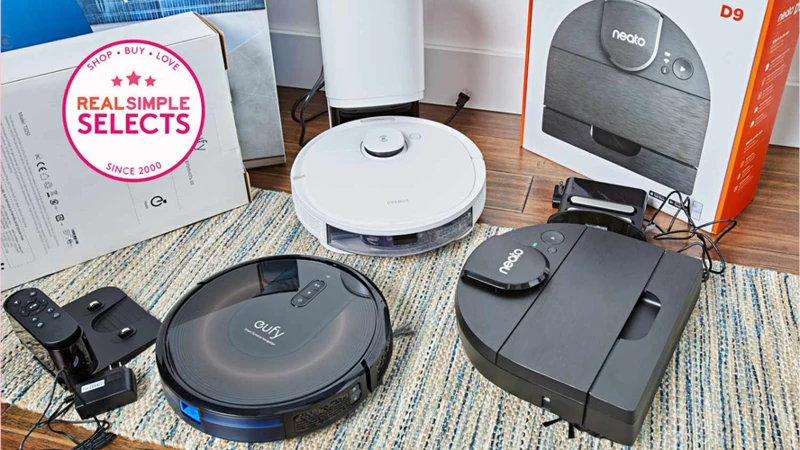
Automatic height adjustment is a remarkable feature that has revolutionized the cleaning process of smart vacuum cleaners. This feature enables the vacuum cleaner to automatically adjust its height as it moves from one surface to another, and this is done without any manual intervention from the user.
Low-Pile Carpet: One of the surfaces where the automatic height adjustment feature on smart vacuum cleaners works best is on low-pile carpet. This type of carpet has short fibers, which makes it a lot easier for the vacuum cleaner to move across the surface. With automatic height adjustment, the vacuum cleaner can adjust its height to ensure that the brushroll is as close to the surface as possible, effectively removing any dirt, dust, or debris.
Hardwood Floors: Automatic height adjustment also works exceptionally well on hardwood floors. Hardwood floors are a lot easier to clean compared to carpets and other surfaces because they are smooth and flat. The feature ensures that the vacuum cleaner adjusts its height to ensure that the brushroll does not scratch or damage the hardwood surface during the cleaning process.
Tiled Surfaces: Tiled surfaces are another area where automatic height adjustment works best. Tiles have a flat and smooth surface, which makes it easier for the vacuum cleaner to clean compared to other surfaces that may have crevices or uneven spaces. With automatic height adjustment, the vacuum cleaner can adjust its height to ensure that the brushroll is as close to the surface as possible, effectively removing any dirt, dust, or debris.
Automatic height adjustment is a feature that works best on surfaces such as low-pile carpet, hardwood floors, and tiled surfaces. It ensures that the vacuum cleaner adjusts its height to suit the surface being cleaned, effectively removing any dirt, dust, or debris in the process without damaging the surface or the vacuum cleaner.
Low-Pile Carpet
Low-pile carpets are a common type of carpet that are relatively easy to clean with a smart vacuum cleaner. The fibers of these carpets are short and tight, which means that there is less resistance when vacuuming compared to other types of carpets. This allows the vacuum cleaner to move more easily, resulting in a thorough and efficient cleaning.
When using automatic height adjustment on low-pile carpets, the smart vacuum cleaner will adjust the height of the brushroll accordingly. The brushroll will be lowered to the appropriate height so that it can pick up dust and debris from the carpet fibers. The sensors on the vacuum cleaner will detect the height of the carpet and adjust the brushroll accordingly. This can be especially helpful for homes with multiple types of flooring.
One of the benefits of using a smart vacuum cleaner on low-pile carpets is that it can remove small particles that might be missed by a regular vacuum cleaner. This is because the brushroll can spin faster, which creates a more powerful suction that can reach deep into the carpet fibers. This can help keep the carpet looking clean and fresh for longer periods of time.
However, there are some challenges to using automatic height adjustment on low-pile carpets. One of the main challenges is that the vacuum cleaner may struggle with larger debris, such as crumbs or pet hair. This is because these larger items can get caught in the carpet fibers, making it difficult for the brushroll to pick them up. In these cases, it may be necessary to use a handheld vacuum or a broom to remove the debris before using the smart vacuum cleaner.
Automatic height adjustment on smart vacuum cleaners can be very useful for cleaning low-pile carpets. It allows the vacuum cleaner to adjust to the height of the carpet, resulting in a thorough and efficient cleaning. With a bit of care and attention, homeowners can keep their carpets looking clean and fresh for longer periods of time.
Hardwood Floors
When it comes to cleaning hardwood floors, automatic height adjustment on smart vacuum cleaners is crucial. Hardwood floors are delicate and can easily be scratched or damaged during cleaning. This is where the automatic height adjustment feature comes into play.
The sensors in smart vacuum cleaners detect the surface of the hardwood floor and adjust the height of the vacuum cleaner to the optimal level necessary for efficient cleaning. The vacuum cleaner will then move smoothly across the floor, without leaving any scratches or marks.
The motorized brushroll, which is another important component of smart vacuum cleaners, also plays a key role in cleaning hardwood floors. It is specifically designed to pick up debris and dirt from the cracks and crevices of hardwood floors. It rotates quickly and dislodges any debris that may be stuck to the floor.
Additionally, the electronic circuit board ensures that the vacuum cleaner does not exert too much pressure on the hardwood floors. It controls the level of suction power so that it is not too strong that it could damage the floors.
One of the biggest benefits of automatic height adjustment on smart vacuum cleaners when it comes to hardwood floors is the prevention of damage to the flooring. This is because the vacuum cleaner adjusts its height to the surface type it is cleaning, reducing the risk of scratching or damaging the floors.
Another added benefit is that the vacuum cleaner can easily reach under low furniture, without bumping into them or causing damage to them. This feature makes for a more thorough and efficient cleaning experience, without having to rearrange the furniture.
Automatic height adjustment on smart vacuum cleaners is a game changer when it comes to cleaning delicate surfaces like hardwood floors. The intelligent sensors, motorized brushroll and electronic circuit board work together in perfect harmony to ensure that the hardwood floors are cleaned efficiently, effectively and without damage.
Tiled Surfaces
Tiled surfaces can be challenging for traditional vacuum cleaners, as they may not be able to clean the grout lines effectively. However, smart vacuum cleaners with automatic height adjustment technology can handle the task with ease. The motorized brushroll adjusts its height based on the tile height and grout lines using sensors and an electronic circuit board.
During the cleaning process, the motorized brushroll is lowered to the surface to agitate dirt and debris. As the vacuum cleaner moves across a tiled surface, the sensors detect any changes in surface height and adjust the brushroll height accordingly. This ensures that the brushroll bristles make the necessary contact with both the tiles and grout lines, resulting in a thorough cleaning.
Additionally, the electronic circuit board controls the suction power to ensure that it is strong enough to pick up debris, but not so strong that it risks damaging the tiles or vacuum cleaner. This regulation makes cleaning tiled surfaces more efficient and gentle.
Using a smart vacuum cleaner with automatic height adjustment on tiled surfaces provides several benefits. Firstly, it ensures that all dirt and debris are removed from the grout lines and between tiles, resulting in a cleaner overall appearance. Secondly, it saves time and energy compared to manually cleaning, as the vacuum cleaner can navigate the tiled surface quickly and efficiently. Finally, the risk of damage to tiled surfaces is minimized, as the vacuum cleaner is designed to function on different floor types and heights.
Automatic height adjustment technology on smart vacuum cleaners makes cleaning tiled surfaces more efficient, thorough, and safe for the surfaces and vacuum cleaners. It is a valuable feature for anyone who wants to keep their tiles and grout lines looking clean and fresh without the hassle of manual cleaning.
Benefits of Automatic Height Adjustment on Smart Vacuum Cleaners

Automatic height adjustment is a revolutionary feature that has made smart vacuum cleaners preferable over traditional ones. This feature comes with several benefits, which we will discuss below.
Efficient Cleaning: One of the most significant benefits of automatic height adjustment is efficient cleaning. This is because it allows the vacuum cleaner to adjust the height of its brushroll automatically to suit different types of surfaces, including carpets, hardwood floors, and tiled surfaces. The vacuum cleaner can optimize suction and clean each surface effectively without leaving behind any dirt or debris.
Saving Energy and Time: Another essential benefit of this feature is that it saves energy and time. The automatic height adjustment ensures that the vacuum cleaner uses the right amount of suction power needed to clean each surface. This ensures that the vacuum cleaner does not waste energy on surfaces where a lower suction power is enough. It also saves time since it eliminates the need for manual adjustments. This is particularly useful when cleaning large spaces or multiple rooms.
Preventing Damage to Surfaces and Vacuum Cleaners: Automatic height adjustment prevents damage to surfaces and vacuum cleaners. This is because the vacuum cleaner adjusts its brushroll height as it moves between surfaces, reducing the likelihood of causing scratches or dents. It also protects the vacuum cleaner’s motor and other parts, ensuring that they last longer and require fewer repairs.
Automatic height adjustment is an essential feature for users who want a vacuum cleaner that is efficient, time-saving, and protects their surfaces and equipment. It is particularly beneficial for those with multiple types of flooring, as it ensures that each surface gets the right amount of suction power, resulting in a thorough clean without the risk of damage.
Efficient Cleaning
When it comes to cleaning, efficiency is a top priority for both homeowners and professional cleaners. Automatic height adjustment on smart vacuum cleaners plays a vital role in ensuring effective and efficient cleaning. As the vacuum cleaner moves from one surface to another, the height automatically adjusts to ensure that the brushroll is in optimal position for maximum suction power and debris pick-up.
This feature ensures that all dirt and debris is picked up on every pass, without the need for manual adjustments or extra effort from the user. The height adjustment feature also helps to prevent dust and debris from being scattered around the room as the brushroll makes contact with different surfaces.
By automatically adjusting to different heights, smart vacuums are able to thoroughly clean various surfaces, from low-pile carpets to hardwood floors and tiled surfaces. This means that no matter what type of flooring you have in your home or office, the vacuum cleaner will be able to clean it effectively and effortlessly.
The efficient cleaning provided by automatic height adjustment on smart vacuums saves time and energy for users. With this feature in place, users can be assured that they will get the job done in less time than it would take with a manual vacuum. This is especially useful when the cleaning task is time-sensitive or when users have a large area to clean.
The efficient cleaning provided by automatic height adjustment on smart vacuum cleaners is a game-changer in the world of cleaning technology. It confirms that smart vacuum cleaners are not only convenient but also highly effective and efficient, making cleaning a breeze.
Saving Energy and Time
One of the biggest benefits of automatic height adjustment on smart vacuum cleaners is that it allows for significant savings in both energy and time. This is achieved through a combination of several factors, each of which works together to make the cleaning process more efficient overall.
Firstly, the sensors in the vacuum cleaner can detect the type of surface being cleaned, and automatically adjust the height of the brushroll accordingly. As a result, the brushroll can clean the surface in fewer passes, which means less time and energy is needed to clean the same area as compared to vacuums without automatic height adjustment.
Secondly, because the brushroll is set at a height that is ideal for each surface, it can pick up debris more easily and effectively. This means that the vacuum cleaner doesn’t need to use as much suction power to pick up dirt and debris, which translates to less energy usage overall.
Thirdly, some smart vacuum cleaners have the ability to map out rooms and create a cleaning plan, which further enhances efficiency. By creating an optimal cleaning route, the vacuum cleaner can avoid cleaning the same area multiple times and use less energy to clean the same space more effectively.
All of these features work together to save time and energy when cleaning. This is particularly important for those who lead busy lives and want to maximize their cleaning efficiency. With automatic height adjustment on smart vacuum cleaners, users can enjoy a cleaner home with less time and energy spent on cleaning.
Preventing Damage to Surfaces and Vacuum Cleaners
One of the most important benefits of automatic height adjustment on smart vacuum cleaners is that it can prevent damage to both surfaces and the vacuum cleaner itself. When a vacuum cleaner is set at a fixed height, it may not be able to detect variations in surface height, leading to potential damage. For example, if a vacuum cleaner is set for a high-pile carpet but is then used on a low-pile carpet or a hard floor, it can damage the brushroll and reduce the efficiency of the cleaner.
However, with automatic height adjustment, the vacuum cleaner can sense changes in surface height and adjust accordingly, preventing any damage. The sensors detect the surface type and adjust the height to ensure the brushroll is neither too close nor too far from the surface. This keeps the brushroll from scratching hard surfaces or becoming less effective on carpets of different heights.
The electronic circuit board provides the necessary power that ensures the motorized brushroll works properly despite surface changes. This feature not only prevents damage on surfaces but also prolongs the life of the vacuum cleaner. A vacuum cleaner that is not equipped with automatic height adjustment may struggle when moving from one surface type to another, causing wear and tear on the motor and parts.
Preventing damage to surfaces and vacuum cleaners is a crucial advantage of automatic height adjustment on smart vacuum cleaners. It ensures that the cleaner operates efficiently on different surfaces without causing any harm to either the surfaces or the machine. This feature also enhances the durability of the vacuum cleaner, saving the user the need to replace it frequently, and thereby saving on cost.
Challenges of Automatic Height Adjustment on Smart Vacuum Cleaners
Although automatic height adjustment on smart vacuum cleaners has many benefits, there are also some challenges that come with it. These challenges include dealing with surfaces that are uneven or have obstacles, as well as the possibility of the sensors malfunctioning.
Dealing with uneven or obstructed surfaces: One of the biggest challenges of automatic height adjustment is dealing with surfaces that are uneven or have objects blocking the path of the vacuum cleaner. On some surfaces, the vacuum cleaner may not detect changes in height and therefore not adjust the brushroll accordingly. Additionally, if there are objects such as toys, books or cords in the way, the vacuum cleaner may not be able to detect the surface properly and could potentially damage the object or the vacuum cleaner.
Possible sensor malfunctions: Another challenge with automatic height adjustment is the possibility of sensor malfunctions. If the sensors fail to detect the appropriate changes in height, the vacuum cleaner may not adjust the brushroll correctly. This could lead to inefficient cleaning and even damage to the vacuum cleaner itself.
Compatibility issues: Compatibility issues can also be a challenge with automatic height adjustment. Some smart vacuum cleaners may not be able to adjust to different types of flooring or carpet. High-pile carpet, for example, may present a significant challenge for some automatic height adjustment systems.
Maintenance and cleaning: Lastly, maintaining and cleaning the sensors, motorized brushroll and electronic circuit board can also be a challenge for automatic height adjustment. If dirt, debris or hair build up on any of the components, the sensors may not function properly, leading to inaccurate height detection and brushroll adjustment.
Despite these challenges, automatic height adjustment remains a valuable feature on smart vacuum cleaners, saving time and improving overall cleaning efficiency. As technology advances and manufacturers continue to improve the design and implementation of the feature, these challenges may become less prevalent.
Conclusion
After exploring the process of how automatic height adjustment works on smart vacuum cleaners, it’s clear that this feature has significant benefits for both the user and their home. The sensors, motorized brushroll, and electronic circuit board work together to ensure optimum cleaning performance on various surfaces.
Low-pile carpets, hardwood floors, and tiled surfaces are all ideal for automatic height adjustment, as it allows the vacuum cleaner to adjust the height of the brushroll to match the surface and provide efficient cleaning.
The benefits of automatic height adjustment are numerous, including more efficient cleaning, time and energy savings, and the prevention of damage to both the vacuum cleaner and the surfaces being cleaned.
However, as with any technology, there are challenges to overcome. Automatic height adjustment may not work as effectively on certain surfaces, and the sensors may need to be adjusted or replaced over time.
Overall, automatic height adjustment on smart vacuum cleaners is a valuable feature that improves cleaning performance and simplifies the user experience. As technology continues to advance, it’s likely we’ll see even more innovative features in the world of smart cleaning appliances.
Frequently Asked Questions
How does automatic height adjustment work?
Automatic height adjustment on smart vacuum cleaners works by using sensors and a motorized brushroll, which adjust the height of the cleaner head to match the surface it is cleaning.
What types of sensors are used for automatic height adjustment?
Typically, smart vacuum cleaners use infrared sensors or camera sensors to detect the surface height and adjust the cleaner head accordingly. Some models also use a combination of both.
What is the function of the motorized brushroll in automatic height adjustment?
The motorized brushroll plays a crucial role in automatic height adjustment as it makes contact with the surface being cleaned and senses the height of the surface. The information is then sent to the sensors on the cleaner head, which adjust the height of the cleaner head accordingly to ensure optimal cleaning.
What role does the electronic circuit board play in automatic height adjustment?
The electronic circuit board is the brain of the smart vacuum cleaner and processes the information sent by the sensors to adjust the height of the cleaner head.
Will automatic height adjustment work on all types of surfaces?
No, automatic height adjustment works best on low-pile carpets, hardwood floors, and tiled surfaces. However, it may not be effective on thick carpets or uneven surfaces.
What are the benefits of automatic height adjustment on smart vacuum cleaners?
The benefits of automatic height adjustment include efficient cleaning, time and energy-saving, and preventing damage to surfaces and vacuum cleaners.
What is the biggest challenge of automatic height adjustment on smart vacuum cleaners?
The biggest challenge of automatic height adjustment is ensuring that the sensors are accurate and can detect the height of the surface being cleaned.
Is automatic height adjustment only found on high-end smart vacuum cleaners?
No, automatic height adjustment can be found on a range of smart vacuum cleaners, including budget-friendly models.
Can automatic height adjustment be turned off?
Yes, some models of smart vacuum cleaners allow you to turn off automatic height adjustment if you prefer to manually adjust the height for specific surfaces.
What is the recommended maintenance for smart vacuum cleaners with automatic height adjustment?
Regular cleaning of the motorized brushroll and sensors is recommended to ensure optimal performance of automatic height adjustment. It’s also advisable to follow manufacturer instructions for maintenance and cleaning.
